

9926GBL
Links internal to this web page
This is a difficult exoplanet to observe because it's a double star with separation = 11"arc. You need really good seeing for use of a photometry aperture that restricts flux measurements to just the exoplanet star (~0.5 mag fainter). It's OK to include both stars in your photometry aperture, but please note that this was done in a header comment line.
Basic Data - Updated 2009.09.22
RA = 22:57:46.8, Decl
= +38:40:30
Season = September 09
V ~ 10.2, B-V = 0.7;
B~10.9, V~10.2, R~9.81, I ~ 9.56 (for combined flux
of stars A and B: B~9.8, V~9.1, R~8.77, I = 8.52)
HJDo = 4363.94656 (72), Johnson
et al, 2008 & P = 4.4652934 (93) day, Johnson
et al, 2008 (as listed in Schneider's
Extrasolar Planets
Encyclopedia)
HJDo = 4363.9463 (7)
& P = 4.4653194 (13) from fit to data in AXA
Depth = 13.0 ±
1.5 mmag if only the exoplanet star is measured, and 6.0 ±
1.5 if both stars are measured. Winn et al,
2007 report 14.0 ± 0.5 mmag
(z-band).
Length = 2.67 ±
0.2 (C & R-band), 2.65 ± 0.02 hr
(z-band), Winn et al, 2007
Fp = 0.44 ± 0.05, F2 = 0.81
± 0.15
b = 0.70
Table Summary
of Transit Light Curves - Updated
2009.09.22
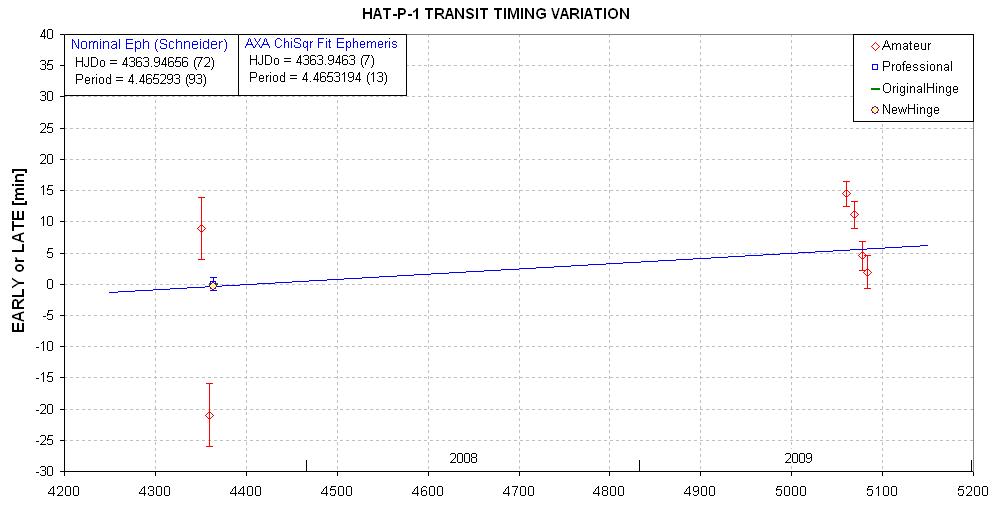


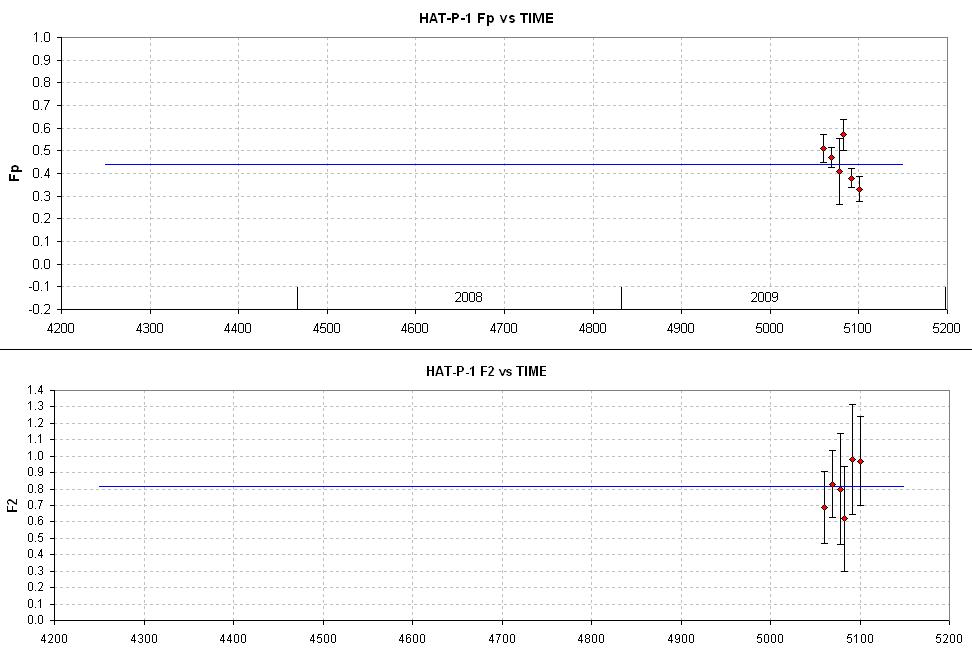
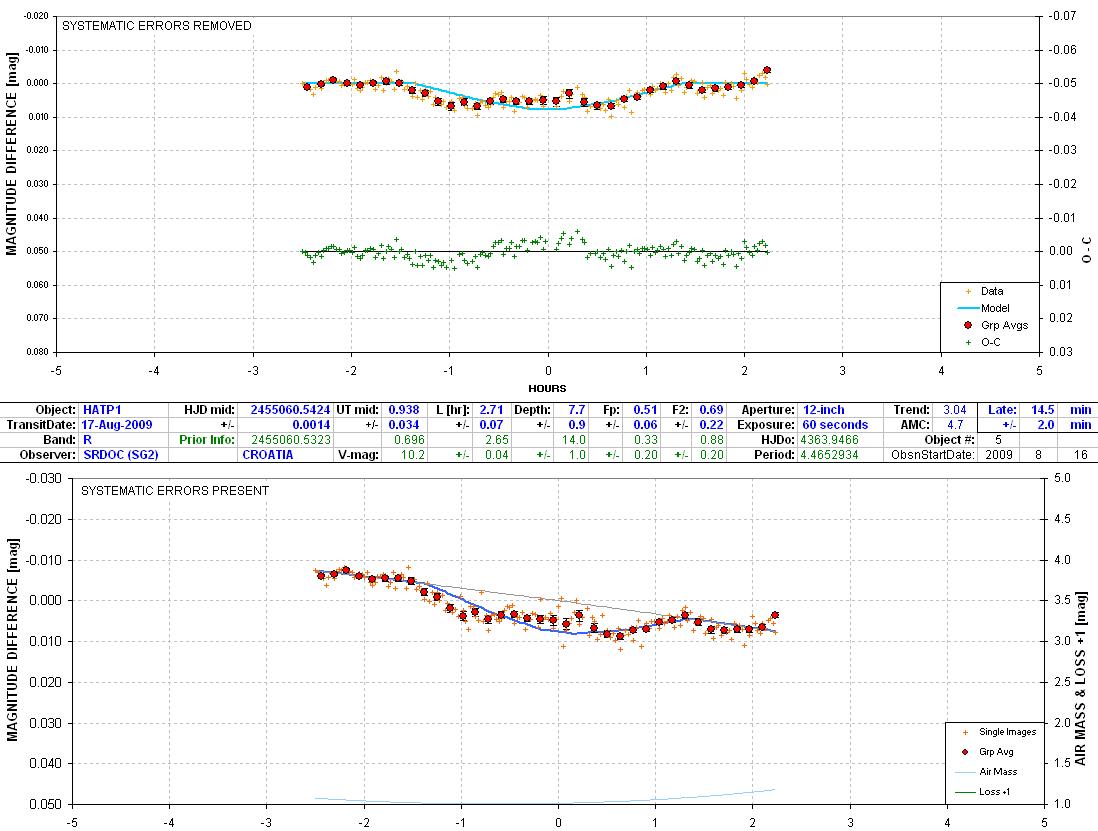
9816SG2 The small depth probably
is due to the photometry aperture including both components A nd B (see
finder image below).
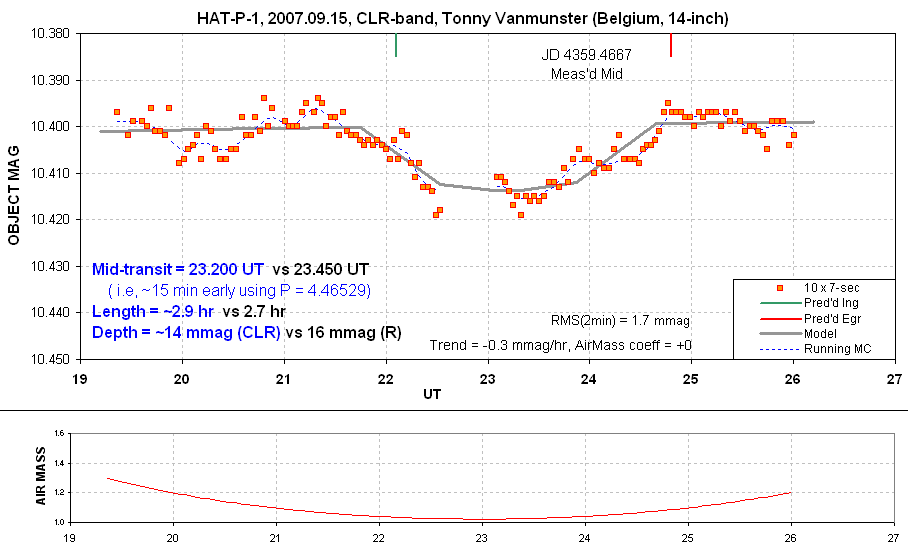
Came early, whereas a week earlier it came late..
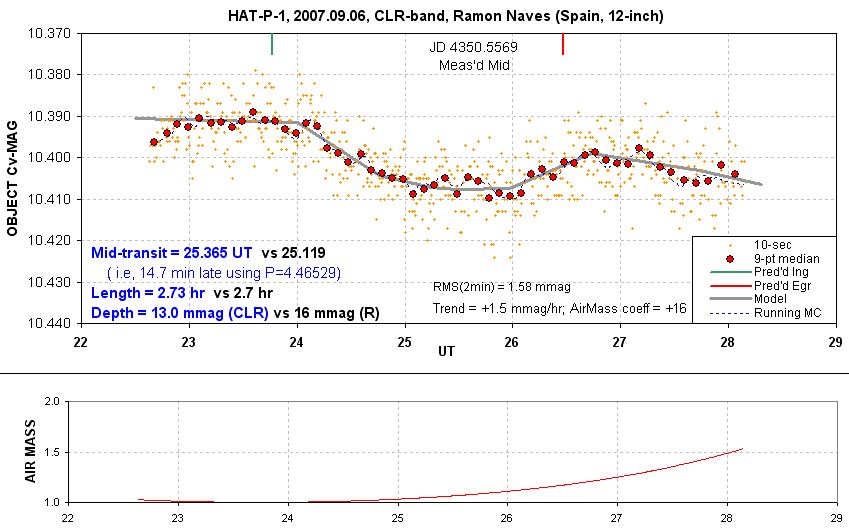
Transit was late. Depth is lower than for R-band, probably because
CLR filter is bluer than R (& limb darkening will produce lower depth
at bluer bands if exoplanet transit chord is close to star center). Length
agrees. Good job for a 12-inch and using 10-second exposure times (with
associated low duty cycle).
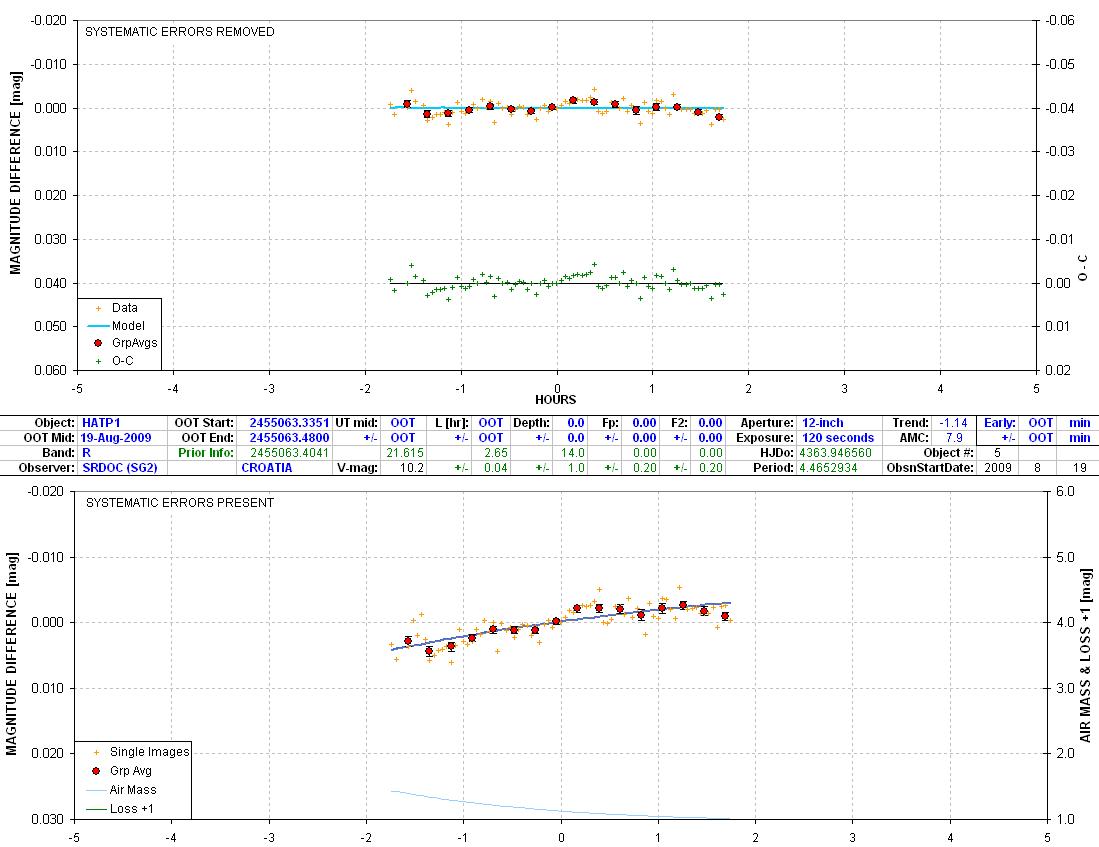
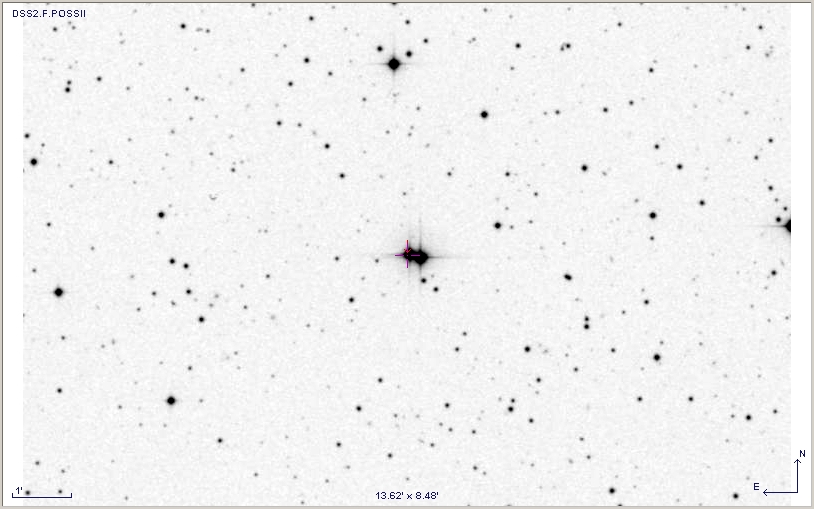
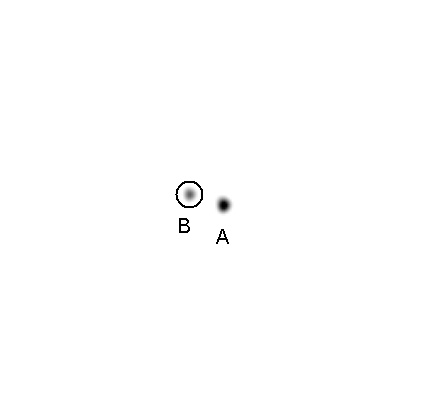
Johnson, JOhn Asher et al, "Measurement of the Spin-Orbit Angle of Exoplanet
HAT-P-1b", arXiv:0806.1734vJ, http://adsabs.harvard.edu/abs/2008arXiv0806.1734J
____________________________________________________________________
WebMaster: Bruce
L. Gary. Nothing on this web page is copyrighted. This site opened: September 08, 2007. Last Update: 2009.09.26